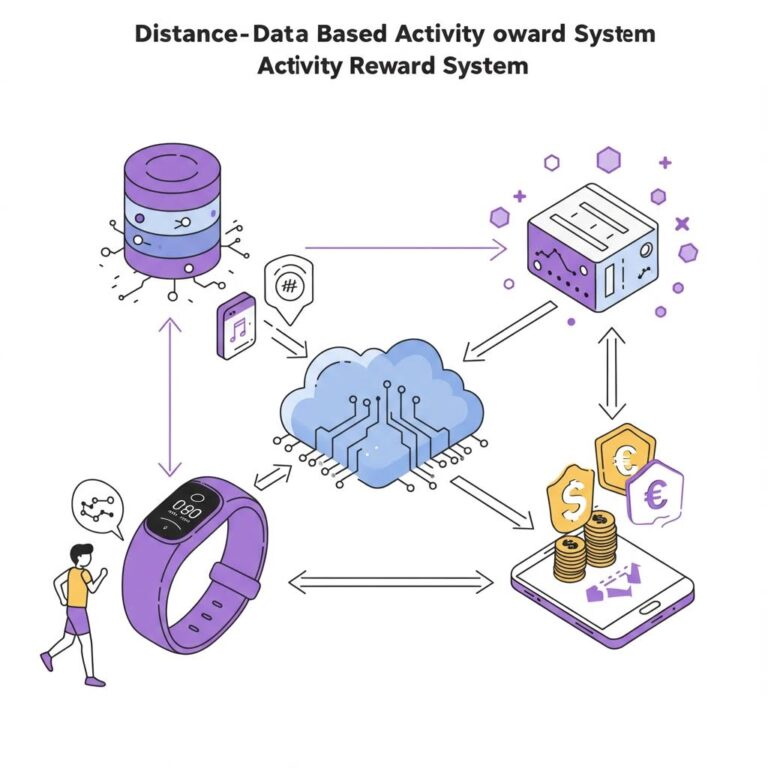Understanding the Availability Heuristic in Scam Prevention
The Psychology Behind Memorable Fraud Stories
The availability heuristic fundamentally influences our perception and memory of fraud through emotionally charged scam narratives. Dramatic fraud incidents create powerful neural imprints that override rational statistical analysis in risk assessment. These vivid experiences become deeply embedded in our cognitive framework, significantly impacting future decision-making processes.
How Memory Shapes Risk Assessment
When individuals encounter compelling fraud testimonials, their neural pathways forge strong connections through heightened amygdala response. These emotional memory imprints become readily accessible reference points, often overshadowing more probable but less dramatic threats. The brain’s preference for vivid, emotional content makes dramatic scam stories particularly influential in shaping risk perception. 카지노사이트 추천
Media Influence and Social Amplification
Media coverage and social sharing intensify the impact of memorable fraud cases, creating a collective consciousness around specific scam types. This amplification effect can lead to:
- Heightened awareness of particular fraud schemes
- Overestimation of certain scam frequencies
- Disproportionate focus on sensational cases
- Neglect of more common fraud risks
Balancing Protection Strategies
Understanding these psychological mechanisms is crucial for developing effective fraud prevention approaches. While the availability heuristic can provide valuable protection against known scam patterns, it may inadvertently create blind spots toward less publicized but equally dangerous threats. Strategic fraud protection requires:
- Recognition of cognitive biases
- Balanced risk assessment methods
- Attention to both high-profile and subtle fraud indicators
- Regular updates to security protocols based on comprehensive threat analysis
Understanding Availability Bias Through Scams
Understanding Availability Bias in Scam Prevention
How Cognitive Bias Affects Fraud Detection
Availability bias significantly influences how people assess their vulnerability to scams. This cognitive tendency leads individuals to evaluate fraud risks based on easily remembered examples rather than actual probability.
Memorable incidents and dramatic stories often skew risk perception, particularly regarding cryptocurrency scams and romance fraud.
Impact on Protective Behaviors
Risk Assessment Patterns
The availability heuristic shapes protective behaviors in predictable ways. People tend to overemphasize defending against recently publicized scams while potentially neglecting more common threats.
This selective focus creates security blind spots that fraudsters can exploit.
Common Manifestations
Investment fraud awareness often spikes after high-profile cases, leading to heightened vigilance in this area.
Meanwhile, everyday risks like phishing attempts and basic email security may receive insufficient attention. This imbalanced approach stems from the brain’s reliance on readily accessible information over statistical reality.
Developing Effective Prevention Strategies
Balanced Protection Methods
A comprehensive approach to fraud prevention requires understanding and counteracting availability bias.
By recognizing how this cognitive tendency affects risk assessment, individuals can develop more balanced protective measures against various scam types.
Strategic Security Implementation
To combat availability bias effectively, security measures should:
- Focus on statistical probability rather than recent examples
- Maintain consistent protection across all potential threat vectors
- Regularly update security protocols based on emerging scam patterns
- Consider both high-profile and common fraud methods
Understanding the role of cognitive bias in scam prevention enables more effective protection strategies and helps maintain comprehensive security against fraudulent activities.
Media’s Role in Memory Formation
The Impact of Media Coverage on Scam Memory Formation
How News Media Shapes Fraud Awareness
The continuous media coverage of scam incidents fundamentally influences how society processes and remembers fraudulent activities.
News outlets consistently prioritize sensational and emotionally charged fraud stories, creating a significant impact on collective memory formation and risk perception.
Psychological Mechanisms Behind Media Influence
Neural processing of fraud-related media content demonstrates powerful connections when stories feature vivid details and emotional testimonials.
These compelling narratives become deeply embedded reference points for fraud risk assessment, with visual content particularly effective at creating lasting memory imprints.
Media Coverage Patterns and Memory Distortion
Selective Reporting Impact
Media representation of scams typically highlights extraordinary cases, leading to a distorted perception of common fraud patterns.
This creates a memory availability bias where sensational stories dominate public consciousness, regardless of their statistical significance in actual fraud occurrence rates.
Risk Assessment Effects
The selective media focus directly influences:
- Personal security decisions
- Risk evaluation methods
- Protective behavior adoption
Memory Enhancement Through Media Exposure
Repeated media exposure to similar scam narratives reinforces specific neural pathways, creating dominant memory patterns that influence future fraud recognition and response.
These strengthened connections become primary reference points for identifying potential threats and assessing risk levels.
Long-term Consequences on Public Perception
The media-memory relationship in fraud awareness creates lasting effects on:
- Collective risk assessment
- Security measure implementation
- Fraud prevention strategies
This dynamic significantly shapes both individual and institutional approaches to fraud prevention and security protocol development.
Emotional Impact of Fraud Stories
The Emotional Impact of Financial Fraud: Understanding Psychological Responses
Emotional Resonance in Fraud Narratives
Fraud narratives create profound emotional responses that fundamentally shape how victims process and remember scam incidents.
The combination of fear, shame, and anger establishes powerful memory imprints, creating cognitive anchors that make these experiences particularly memorable. These emotional markers serve as lasting reminders that influence future behavior and risk assessment.
Psychological Impact of Financial Loss
Financial fraud victims experience intense psychological reactions when facing monetary losses.
The activation of survival instincts through the amygdala response creates deep-seated memories that surpass statistical data in their impact.
Investment scam stories involving lost retirement savings demonstrate how emotional resonance amplifies memory retention, making personal narratives more influential than generic fraud prevention advice.
Long-Term Effects of Fraud Victimization
The psychological burden of fraud creates lasting neural imprints through repeated memory processing. Victims often experience:
- Heightened vigilance in financial transactions
- Enhanced memory recall of fraud-related details
- Behavioral adaptations in future risk assessment
- Emotional trauma affecting decision-making
This intensified emotional processing leads to stronger neural pathways, making fraud memories particularly accessible and influential in shaping future risk perception and protective behaviors.
Memory Formation and Risk Assessment
Fraud-related memories become deeply embedded through emotional processing, creating a complex interplay between:
- Cognitive processing of the fraud experience
- Emotional response patterns
- Behavioral adaptation mechanisms
- Risk assessment capabilities
These factors combine to influence future financial decision-making and protective behaviors, often resulting in heightened caution in similar situations.
Risk Assessment and Decision Making
Risk Assessment and Decision Making in Modern Finance
Understanding Cognitive Biases in Financial Risk Evaluation
Cognitive psychology reveals how risk assessment and decision-making processes fundamentally transform when influenced by memorable fraud narratives.
These vivid accounts create powerful mental shortcuts that can override rational probability calculations in financial decision-making.
The Impact of Availability Heuristic on Financial Decisions
Availability bias significantly shapes risk perception in financial contexts.
When evaluating investment opportunities or financial decisions, dramatic fraud narratives become readily accessible reference points, often leading to disproportionate risk assessment.
For instance, recent cryptocurrency fraud stories can cause individuals to overestimate crypto-related risks compared to other financial threats.
Neural Processing of Risk Signals
The brain’s preferential recall of emotionally charged fraud narratives directly influences choices about:
- Investment strategies
- Online transactions
- Personal data security
- Financial risk management
Dual Nature of Mental Shortcuts in Risk Evaluation
Risk assessment heuristics serve both protective and potentially limiting functions:
- Benefits:
- Quick identification of known scam patterns
- Rapid threat response
- Enhanced pattern recognition
- Limitations:
- Overemphasis on familiar fraud types
- Potential blind spots to emerging threats
- Skewed probability assessment
This cognitive framework demonstrates how risk perception shapes financial decision-making, highlighting the need for balanced evaluation methods that combine intuitive responses with analytical assessment.
Social Sharing of Scam Experiences
Understanding the Social Sharing of Scam Experiences
The Viral Nature of Financial Fraud Stories
The transmission of scam narratives through social networks plays a crucial role in shaping public awareness of financial fraud.
These stories, rich with detailed fraud accounts and emotional elements, spread rapidly across communities, creating lasting impressions that influence collective risk perception.
Digital Amplification and Risk Awareness
Social media platforms serve as powerful amplifiers of fraud experiences, enabling single incidents to reach massive audiences through digital sharing mechanisms.
This widespread distribution triggers the availability heuristic, where individuals assess their vulnerability to scams based on readily recalled examples from their social networks.
Impact on Collective Security Knowledge
Warning System Development
The social sharing ecosystem functions as an organic warning system, with fraud stories serving multiple critical purposes:
- Real-time threat alerts
- Victim support networks
- Tactical fraud prevention knowledge base
Risk Perception Dynamics
While shared experiences strengthen collective defense mechanisms, certain dramatic narratives can create biased risk assessment.
The most viral fraud stories often reflect shocking outliers rather than common threats, potentially skewing public understanding of prevalent scam patterns.
Community Protection Framework
Fraud prevention networks emerge naturally through these shared experiences, creating:
- Informal community watchdog systems
- Collaborative scam identification methods
- Enhanced collective security awareness
The social transmission of fraud experiences ultimately shapes a dynamic, community-driven defense against financial scams, though careful attention must be paid to maintaining balanced risk perspectives.
Cognitive Biases in Financial Security
Understanding Cognitive Biases in Financial Security
Common Financial Decision-Making Biases
Cognitive biases fundamentally shape our approach to financial security and threat assessment.
Confirmation bias significantly impacts financial decision-making by driving individuals to seek information that reinforces existing beliefs about financial risks while disregarding contradictory evidence.
The sunk cost fallacy emerges as a critical factor when investors continue funding questionable financial ventures solely due to previous resource commitments.
Impact on Risk Assessment
Anchoring bias plays a crucial role in financial risk evaluation, causing individuals to place disproportionate weight on initial reference points. For example, learning about a $5,000 fraud loss becomes an arbitrary benchmark against which all subsequent financial threats are measured.
Overconfidence bias creates dangerous vulnerabilities by inflating perceived abilities to detect financial scams, while optimism bias diminishes awareness of personal susceptibility to financial threats.
Psychological Factors in Financial Security
The brain’s reliance on mental shortcuts, while evolutionarily advantageous for quick decision-making, creates significant vulnerabilities in financial security assessment.
These cognitive shortcuts often result in:
- Incomplete threat analysis
- Skewed risk perception
- Compromised financial judgment
- Increased vulnerability to sophisticated scams
These psychological patterns demonstrate how cognitive biases can systematically undermine otherwise sound financial security practices and risk assessment capabilities.
Breaking Free From Memory Distortions
Breaking Free From Memory Distortions: A Guide to Cognitive Security
Understanding Memory Bias in Financial Security
Memory-based cognitive biases significantly impact how we process and respond to financial security threats.
Our brains naturally gravitate toward emotionally charged fraud scenarios, creating a skewed perception of risk that can leave us vulnerable to more common threats.
These psychological distortions often lead to misallocation of security resources and attention.
Implementing Systematic Threat Assessment
Data-Driven Security Monitoring
Systematic threat assessment requires maintaining a comprehensive security incident log that captures both major and minor events. This evidence-based approach helps counter the availability heuristic that typically draws attention to dramatic but rare occurrences.
Statistical Analysis and Risk Calibration
Regular consultation of objective fraud statistics enables proper risk calibration against real-world threat frequencies. This practice ensures security measures align with actual risk probabilities rather than perceived dangers based on memorable incidents.
Developing Balanced Security Awareness
Risk perception optimization involves recognizing when memorable incidents overshadow more prevalent threats. While complex investment scams may capture attention, common security threats like phishing attempts and credit card fraud typically pose greater statistical risks.
Strategic Security Response
Methodical documentation of personal security experiences, combined with empirical data analysis, creates a balanced threat assessment framework. This approach enables more effective allocation of protective measures and resources toward genuine security priorities.
Through systematic monitoring and statistical validation, organizations and individuals can develop more effective security strategies that address both high-profile and everyday threats with appropriate weight and attention.



